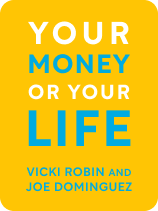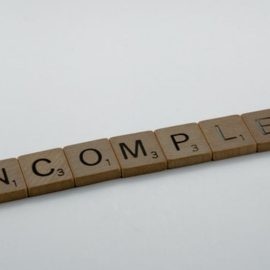

This article is an excerpt from the Shortform book guide to "Your Money or Your Life" by Vicki Robin and Joe Dominguez. Shortform has the world's best summaries and analyses of books you should be reading.
Like this article? Sign up for a free trial here .
Does your to-do list include transforming your relationship with money? Would you know where to start?
In Your Money or Your Life, Vicki Robin and Joe Dominguez discuss how transforming your relationship with money can lead to financial independence. They outline four aspects of financial independence thinking, two speeds of application, and three styles of finance management.
Read more to learn about transforming your relationship with money.
Keys to Transforming Your Relationship With Money
Most of us feel forced to choose between “money” and “life,” and we inevitably choose money, sacrificing our relationships, health, and joy in the process. Instead of living our lives, we spend all our time at jobs we don’t really like to make money we have little time or energy to enjoy.
But we don’t have to choose between our lives and our money. We can have both. Your Money or Your Life offers 9 steps toward transforming your relationship with money and becoming financially independent (FI), the state of not having to work for money. It’s the key to having both the life you want and the money to achieve and maintain it.
The 9 steps, in brief, are:
- Visualize earnings and calculate net worth.
- Calculate your real hourly wage and track money.
- Categorize monthly spending.
- Evaluate monthly spending.
- Graph your income and expenses.
- Reduce spending.
- Increase income.
- Graph investment income.
- Choose investment options.
FI-Thinking
To reach financial independence, you need to practice FI-thinking: cultivating a sense of curiosity toward money. This is a critical ingredient of transforming your relationship with money. There are 4 aspects to FI-thinking:
- Financial Intelligence: Looking objectively at your money. This includes the money you’ve earned and what you’ve bought with it. Plus, you need to know what money is, examine the money that comes into and out of your life, and evaluate whether the type of work you do and the time you spend doing it are in line with your values, purpose, and dreams.
- Financial Integrity: Understanding the effects of earning and spending money on yourself and the earth. You have to find the sweet spot—enough material goods to fulfill and enrich your life, but not so many that they become excessive or create clutter.
- Financial Independence: Escaping your dependence on money. This includes paying down debt and changing harmful assumptions you have about finances.
- Financial Interdependence: Recognizing the ways that you dedicate your time to the world and how that enriches your life.
You’ll practice each of these components as you work through the program’s 9 steps.
Your Speed and Your Style
Your speed of application and your style of financial management can impact how you go about transforming your relationship with money in your quest for financial freedom.
When you’ll reach financial independence depends on the speed and consistency with which you apply the book’s steps. People generally fall into two categories:
- Hares apply principles quickly and set early financial independence goals.
- Turtles apply principles more slowly, but systematically to pay down debt and save money so that they’ll reach financial independence around retirement age.
Aside from how fast or slow you work through the steps, there are 3 styles of personal finance management:
- Ninjas work diligently to optimize their finances and investments through reading finance blogs, playing with their investment portfolio, and maximizing savings on purchases.
- Minimalists prioritize experiences over material goods and keep their lives clutter-free.
- DIYers, or do-it-yourself-ers, are “conscious materialists”: They make careful use of material resources and enjoy hands-on experiences with the world, like using wood scraps to build a birdhouse.
You may not identify with any of these styles, but it’s helpful to know how others apply the steps in this book. The bottom line: People will approach this book differently—but you, too, can commit to working steadily to complete each of the steps and transforming your relationship with money.

———End of Preview———
Like what you just read? Read the rest of the world's best book summary and analysis of Vicki Robin and Joe Dominguez's "Your Money or Your Life" at Shortform .
Here's what you'll find in our full Your Money or Your Life summary :
- The 9 steps to reach financial independence
- How to change your entire relationship with money and live a more meaningful life
- How to align your spending habits with your values, purpose, and dreams






